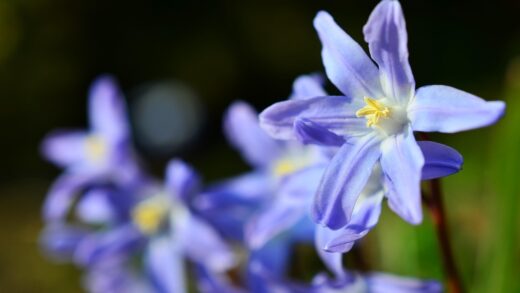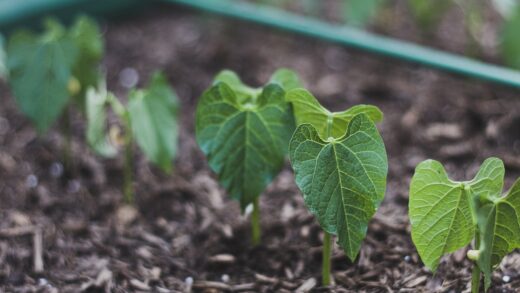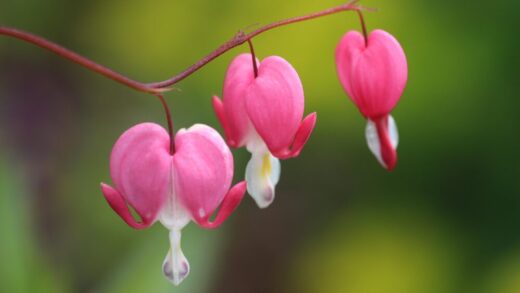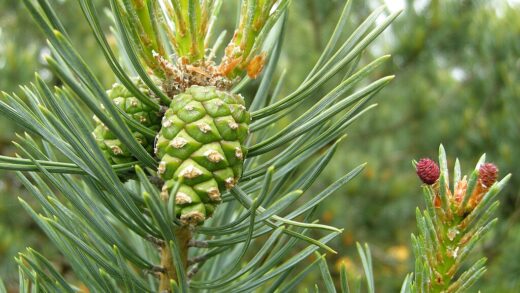Bluebeard, a cherished favorite among late-season bloomers, offers a spectacular display of vibrant blue flowers when many other garden plants are beginning to fade. This deciduous shrub is not only celebrated for its aesthetic appeal but also for its remarkable resilience and ease of care, making it an excellent choice for both novice and experienced gardeners. Its compact, mounded growth habit fits perfectly into mixed borders, foundation plantings, and even container gardens. Understanding the fundamental needs of this plant is the first step toward cultivating a healthy, profusely blooming specimen that will attract pollinators and admiration year after year.
The aromatic foliage of the bluebeard is another of its significant attributes, releasing a pleasant, slightly herbal scent when brushed against or crushed. This characteristic adds a sensory dimension to the garden that extends beyond its visual beauty. The leaves are typically grayish-green to dark green, providing a soft, textured backdrop for the brilliant azure flowers that emerge in late summer and persist into the autumn. This combination of fragrant leaves and stunning blooms makes it a truly dual-purpose plant in landscape design.
Native to East Asia, the modern hybrids we cultivate today are the result of careful selection to enhance their best qualities, including more intense flower color, a more compact form, and improved hardiness. These shrubs are perfectly adapted to thrive in a wide range of temperate climates, showing a particular fondness for sunny, well-drained locations. Their ability to tolerate periods of drought once established further cements their status as a low-maintenance garden staple. The plant’s overall vigor means it quickly establishes itself and begins to reward the gardener with its floral display within the first or second season.
Ultimately, the successful cultivation of bluebeard hinges on providing a few key environmental conditions that mimic its natural habitat. Proper siting, timely pruning, and appropriate watering are the pillars of its care regimen. By mastering these relatively simple aspects, you can ensure your bluebeard not only survives but thrives, becoming a robust and floriferous centerpiece of the late-season garden. This guide will provide a comprehensive overview of the essential practices required to maintain the health and beauty of this exceptional shrub.
An introduction to the bluebeard shrub
The bluebeard shrub is a hybrid that resulted from crossing two Asian species, and it has since become a cornerstone of the late summer and autumn garden. Its most striking feature is undoubtedly the profusion of powder-blue to deep violet flowers that cluster along the stems. These blossoms are a magnet for pollinators like bees and butterflies, which are often in search of nectar sources later in the season. The plant typically grows to a manageable size of about one meter in height and width, forming a neat, rounded mound that requires minimal shaping. This compact nature makes it exceptionally versatile for various garden applications.
More articles on this topic
Beyond its floral display, the foliage provides significant ornamental value throughout the growing season. The leaves are lance-shaped and arranged oppositely along the stems, with colors ranging from a soft, silvery-green to a rich, dark green, depending on the cultivar. Many varieties feature leaves that are pleasantly aromatic, adding another layer of interest to the garden. This fragrance can help to deter deer and rabbits, which tend to avoid plants with strong scents, offering a form of natural pest control. The texture of the foliage creates a beautiful contrast with broadleaf perennials and ornamental grasses.
Understanding the growth cycle of bluebeard is key to its proper care. It is a sub-shrub, which means it has a woody base but produces new, herbaceous growth each spring from which the flowers develop. This characteristic is central to its pruning requirements, as the blooms form exclusively on new wood. Therefore, the plant benefits from being cut back hard in late winter or early spring to encourage a vigorous flush of new stems. This annual renewal process ensures the shrub remains compact, tidy, and produces the maximum number of flowers.
There are numerous cultivars of bluebeard available, each offering slight variations in flower color, foliage, and size. Popular varieties include ‘Dark Knight’, known for its deep, dark blue flowers and silvery foliage, and ‘Longwood Blue’, which is celebrated for its sky-blue blossoms and vigorous growth. Some newer introductions even feature chartreuse or variegated leaves, providing season-long color and interest even before the plant begins to bloom. Selecting the right cultivar for your garden’s color scheme and size constraints allows for a customized and impactful design.
Establishing the ideal growing environment
Selecting the perfect location is the most critical factor for ensuring the long-term health and vitality of your bluebeard shrub. This plant absolutely thrives in a position that receives full sun, which translates to a minimum of six to eight hours of direct sunlight per day. Abundant sunlight is the primary catalyst for prolific flowering; without it, the plant will become leggy and produce sparse, lackluster blooms. The chosen site should also offer some protection from harsh, drying winds, which can stress the plant and damage its foliage, although it is generally quite hardy once established.
More articles on this topic
The soil composition is the second pillar of a suitable growing environment, with excellent drainage being the most important requirement. Bluebeard is notoriously intolerant of “wet feet” and will quickly succumb to root rot in heavy, waterlogged soils. An ideal soil is a sandy or loamy mix that allows excess water to drain away freely. If you are working with heavy clay soil, it is essential to amend the planting area generously with organic matter such as compost, well-rotted manure, or fine pine bark to improve its structure and drainage. This preparation before planting is a crucial investment in the future health of the shrub.
Soil pH is another consideration, although bluebeard is adaptable to a reasonably wide range. It performs best in soils that are neutral to slightly alkaline, which is a common condition in many garden environments. If your soil is known to be highly acidic, a light application of garden lime can help to raise the pH to a more favorable level. A simple soil test can provide valuable information about both the pH and the existing nutrient levels, allowing you to make targeted amendments rather than guessing what the plant needs. Proper soil preparation ensures the root system can establish itself quickly and efficiently.
When considering companion plants, choose species with similar requirements for sun and drainage to create a harmonious and low-maintenance garden bed. Drought-tolerant perennials such as lavender, sedum, Russian sage, and ornamental grasses make excellent partners for bluebeard. These combinations not only look beautiful together, creating a tapestry of texture and color, but they also simplify your watering routine. Planting bluebeard among these companions allows you to create a cohesive, water-wise garden design that offers visual interest from spring through autumn.
A calendar of seasonal care
In the early spring, as the threat of hard frost recedes, the primary task for bluebeard care is the annual pruning. This is the most important maintenance activity of the year and should be completed before new growth begins to emerge. The goal is to cut the entire shrub back hard, leaving just a few inches of the woody framework above the ground. This seemingly drastic measure stimulates the growth of strong new stems, and since the plant flowers on new wood, it guarantees a spectacular floral display later in the season. Early spring is also an ideal time to apply a balanced, slow-release fertilizer around the base of the plant.
As the season progresses into late spring and early summer, the focus shifts to monitoring growth and ensuring adequate moisture. The newly emerging stems will grow rapidly, quickly forming a lush, mounded shrub. During this period, especially in the absence of regular rainfall, it is important to water the plant deeply but infrequently to encourage the development of a deep, resilient root system. Weeding around the base of the shrub is also important to reduce competition for water and nutrients, and applying a layer of organic mulch can help to suppress weeds while conserving soil moisture.
The reward for your efforts arrives in late summer and continues through the autumn, as the bluebeard bursts into bloom. During this flowering period, the primary care task is simply to enjoy the show and provide supplemental water during any prolonged dry spells. Deadheading, or the removal of spent flowers, is generally not necessary for bluebeard, as it flowers continuously on its new stems. The vibrant blue flowers will be a hub of activity for bees, butterflies, and other beneficial insects, adding life and movement to your garden.
As autumn transitions into winter, the plant will finish its flowering cycle and begin to enter dormancy. After the first hard frost, the leaves will drop, and the plant will prepare for the cold months ahead. At this time, it is beneficial to apply a thick layer of mulch, such as shredded leaves or wood chips, around the base of the plant. This mulch layer helps to insulate the root system from extreme temperature fluctuations and protects the crown of the plant. No further pruning or fertilization is needed until the following spring, allowing the shrub to rest.
The vital role of annual pruning
Pruning is arguably the single most important aspect of bluebeard care, directly influencing the plant’s size, shape, and flowering potential. The fundamental principle to remember is that this shrub produces its flowers on new growth that emerges in the spring. Without proper pruning, the plant would become a tangled mass of woody stems with flowers appearing only at the tips of the new, shorter shoots. An annual hard prune encourages the plant to produce a multitude of vigorous new stems from its base, which will be covered in flowers from late summer until the first frost.
The timing of this pruning is absolutely critical for success. The ideal window is in late winter or early spring, just after the worst of the cold weather has passed but before the plant breaks dormancy and begins to push out new growth. Pruning too early in the winter can expose the freshly cut stems to cold damage, while waiting too long into the spring can sacrifice some of the plant’s energy that has already been put into developing buds on the old wood. Observing the plant for the first signs of bud swell is a good indicator that the time to prune has arrived.
The technique for pruning bluebeard is straightforward and requires only a sharp pair of bypass pruners or loppers. The goal is to cut back all of the stems from the previous year’s growth to a height of approximately 15 to 20 centimeters from the ground. Make your cuts clean and at a slight angle, just above a pair of buds if they are visible. This removes the old, woody structure and forces the plant to regenerate from its base, resulting in a compact, well-branched shrub that is structurally sound and capable of supporting a heavy bloom set.
This annual hard pruning regimen not only maximizes flower production but also helps to maintain the plant’s health and manage its size. By removing the old wood each year, you prevent the shrub from becoming overly dense and woody in the center, which can impede air circulation and create an environment favorable for diseases. It also keeps the plant at a desirable, manageable size for mixed borders and smaller garden spaces. This simple yearly task is the key to transforming a good bluebeard into a truly spectacular garden specimen.
Mastering watering and nutrition
Proper watering is crucial for establishing a new bluebeard shrub, but once mature, it is remarkably drought-tolerant. During its first growing season, the plant requires consistent moisture to develop a strong and extensive root system. This means watering deeply once or twice a week, especially during hot, dry weather, ensuring the water penetrates deep into the soil profile. The goal is to keep the soil evenly moist but not saturated. Using a soaker hose or drip irrigation can be an efficient way to deliver water directly to the root zone while keeping the foliage dry.
Once the bluebeard is well-established, typically after the first year, its water needs decrease significantly. Its ability to withstand periods of drought makes it an excellent candidate for water-wise or xeriscape gardens. In most temperate climates, established plants will require supplemental irrigation only during prolonged periods of heat and drought. When you do water, it is always better to water deeply and infrequently rather than providing shallow, frequent sprinklings. This practice encourages the roots to grow deeper into the soil where they are better insulated from surface heat and can access more moisture reserves.
In terms of nutrition, bluebeard is not a heavy feeder and generally thrives in average garden soil without extensive fertilization. Over-fertilizing, particularly with high-nitrogen fertilizers, can be counterproductive, leading to excessive leafy growth at the expense of flower production. A single application of a balanced, slow-release granular fertilizer in the early spring, just as new growth begins, is typically all that is required for the entire season. Alternatively, amending the soil with a layer of compost each spring provides a gentle, natural source of nutrients.
Observing your plant is the best way to gauge its needs. Signs of underwatering include wilting leaves that do not recover in the evening, while yellowing leaves and stem dieback can indicate overwatering and potential root rot. A healthy, thriving bluebeard will have vibrant foliage and strong, steady growth. If the plant appears stunted or the leaves are pale, it may indicate a nutrient deficiency, but it is important to first rule out other issues like poor drainage or inadequate sunlight before applying additional fertilizer.
Proactive health management and troubleshooting
One of the most appealing aspects of the bluebeard shrub is its general resistance to pests and diseases. This inherent hardiness means that with proper siting and care, the plant will likely remain healthy and trouble-free throughout its life. The most effective strategy for health management is prevention. By providing the plant with its preferred conditions—full sun and sharply drained soil—you create an environment where it can thrive and is less susceptible to stress-related problems. Good air circulation is also key, so avoid overcrowding plants in the garden.
The most significant health issue that can affect bluebeard is root rot, which is almost always a result of poor drainage and overwatering. The roots of the plant cannot tolerate sitting in waterlogged soil, which leads to fungal pathogens attacking the root system. Symptoms include yellowing leaves, wilting, and stem dieback, and by the time these are visible, the damage can be extensive. Prevention is the only reliable cure, so it is imperative to ensure the planting site has excellent drainage or to amend heavy soils thoroughly before planting.
While insect pests are rarely a major concern, you may occasionally find common garden pests like aphids or spider mites, particularly if the plant is under stress. A strong jet of water from a hose can often be enough to dislodge these pests from the plant. For more persistent infestations, insecticidal soap or horticultural oil can be effective and are less harmful to beneficial insects than broad-spectrum chemical pesticides. The aromatic foliage of bluebeard also helps to deter larger pests like deer and rabbits, which typically leave it alone.
Occasionally, you might observe leaf spot, a fungal issue that can cause dark spots on the foliage, especially during periods of high humidity. This is usually a cosmetic issue and does not pose a serious threat to the overall health of the plant. To manage leaf spot, ensure good air circulation around the plant by giving it adequate space and prune out any heavily affected foliage. Watering at the base of the plant rather than overhead can also help to keep the leaves dry and reduce the likelihood of fungal spores taking hold.


















